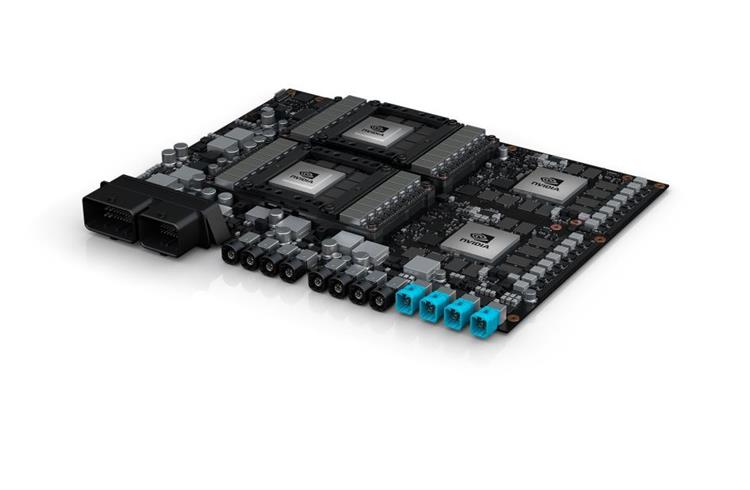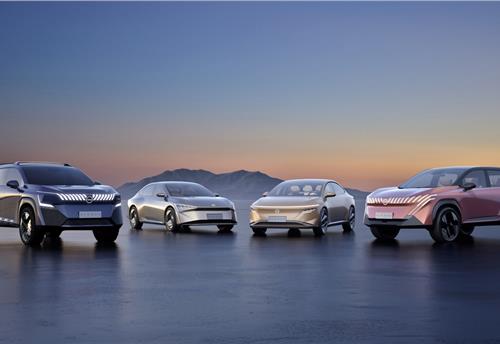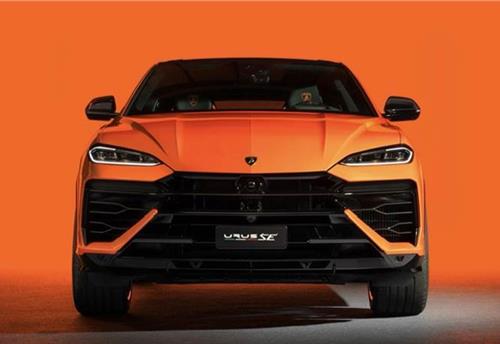Nvidia’s Pegasus AI gives new charge for Level 5 Autonomy
Nvidia says of the 225 partners developing on its Drive PX platform, and more than 25 are developing fully autonomous robo-taxis using Nvidia Cuda GPUs (Graphic Processing Units).
American technology and graphic chip major Nvidia has unveiled its latest AI system codenamed ‘Pegasus’ that will enable level 5 driverless vehicles. The American major has been working with various auto manufacturers for developing new-tech solutions for the automotive future, including driverless tech and connected vehicles technology.
It’s new system, codenamed Pegasus, extends the Nvidia Drive PX AI computing platform to handle Level 5 driverless vehicles, that delivers over 320 trillion operations per second -- more than 10x the performance of its predecessor, Nvidia Drive PX 2.
As per Nvidia, this new system will help make possible a new class of vehicles that can operate without a driver -- fully autonomous vehicles without steering wheels, pedals or mirrors, and interiors that feel like a living room or office. They will arrive on demand to safely whisk passengers to their destinations, bringing mobility to everyone, including the elderly and disabled.
It claims that with millions of hours of lost time will be recaptured by drivers as they work, play, eat or sleep on their daily commutes. And countless lives will be saved by vehicles that are never fatigued, impaired or distracted -- increasing road safety, reducing congestion and freeing up valuable land currently used for parking lots.
Nvidia says of the 225 partners developing on its Drive PX platform, and more than 25 are developing fully autonomous robo-taxis using Nvidia Cuda GPUs (Graphic Processing Units). Today, their trunks resemble small data centres, loaded with racks of computers with server-class Nvidia GPUs running deep learning, computer vision and parallel computing algorithms. Their size, power demands and cost make them impractical for production vehicles.
The computational requirements of robo-taxis are enormous -- perceiving the world through high-resolution, 360-degree surround cameras and lidars, localising the vehicle within centimetre accuracy, tracking vehicles and people around the car, and planning a safe and comfortable path to the destination. All this processing must be done with multiple levels of redundancy to ensure the highest level of safety. The computing demands of driverless vehicles are easily 50 to 100 times more intensive than the most advanced cars today.
Commenting on the future of autonomous vehicles, Jensen Huang, founder and CEO, Nvidia says, "Creating a fully self-driving car is one of society's most important endeavours -- and one of the most challenging to deliver. The breakthrough AI computing performance and efficiency of Pegasus is crucial for the industry to realize this vision. Driverless cars will enable new ride- and car-sharing services. New types of cars will be invented, resembling offices, living rooms or hotel rooms on wheels. Travellers will simply order up the type of vehicle they want based on their destination and activities planned along the way. The future of society will be reshaped.”
"Today dozens of companies are racing to develop robo-taxis, but they are still gated by the massive computation needs of a truly driverless car," says, Luca De Ambroggi, senior principal automotive analyst at IHS Markit.
Specifications
Nvidia Drive PX Pegasus is powered by four high-performance AI processors, it couples two of Nvidia’s newest Xavier system-on-a-chip processors -- featuring an embedded GPU based on the its Volta architecture -- with two next-generation discrete GPUs with hardware created for accelerating deep learning and computer vision algorithms. The system will provide the enormous computational capability for fully autonomous vehicles in a computer the size of a license plate, drastically reducing energy consumption and cost.
It also is designed for ASIL D certification -- the industry's highest safety level -- with automotive inputs/outputs, including CAN (controller area network), Flexray, 16 dedicated high-speed sensor inputs for camera, radar, lidar and ultrasonics, plus multiple 10Gbit Ethernet connectors. Its combined memory bandwidth exceeds 1 terabyte per second.
Nvidia Drive PX Platform
The Nvida Drive PX platform scales from a single mobile processor configuration delivering Level 2+/Level 3 capabilities to a combination of multiple mobile processors along with discrete GPUs for full Level 5 capability. These configurations run on a single, open software architecture. This enables automakers and tier 1 suppliers to move from development into production for a wide range of self-driving solutions -- from Auto-Cruise on the highway, to Auto-Chauffeur for point-to-point travel, to Pegasus for a fully autonomous vehicle.
As per the company, this cloud-to-car approach will enable cars to receive over-the-air updates to add new features and capabilities throughout the life of a vehicle. Pegasus will be available to automotive partners in the second half of 2018. Nvidia DriveWorks software and Nvidia Drive PX 2 configurations are available today for developers working on autonomous vehicles and algorithms.
RELATED ARTICLES
Kia displays EV5 and Sonet SUVs for Chinese market
Kia has unveiled a number of key models and new technologies for Chinese customers at the 2024 Beijing International Aut...
Nissan targets growth in China, unveils four NEV concepts at Beijing Motor Show
The two EVs and two plug-in hybrids are a joint effort with Nissan’s local partner Dong Feng and aimed to better address...
Lamborghini unveils Urus SE ahead of Auto China 2024
Electric-only range of 60km helps reduce emissions by 80%.





 12 Oct 2017
12 Oct 2017
 5508 Views
5508 Views





 Autocar Pro News Desk
Autocar Pro News Desk




